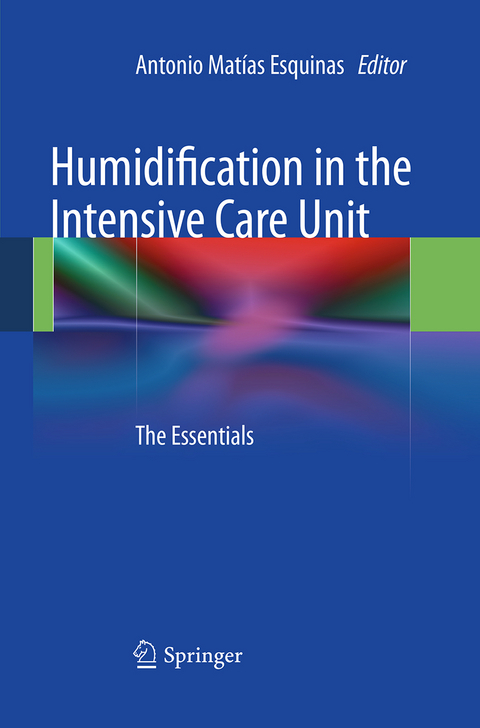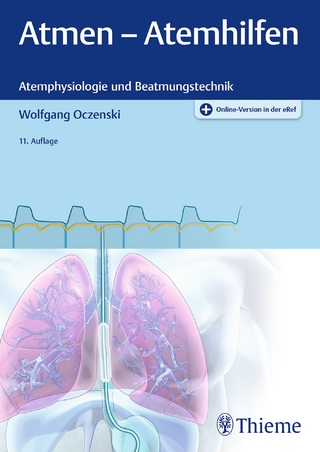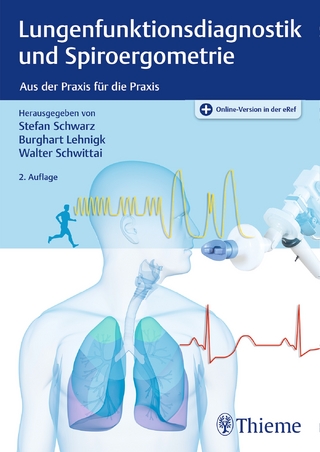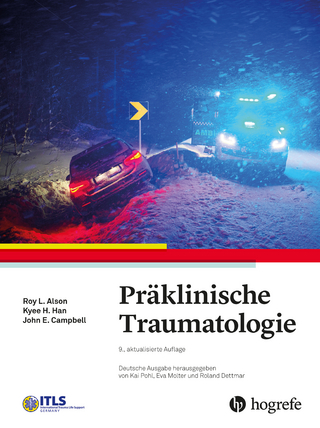
Humidification in the Intensive Care Unit
Springer Berlin (Verlag)
978-3-662-51929-5 (ISBN)
Inadequate humidification of inspired gases can cause a variety of serious problems, and humidification has accordingly become an important aspect of modern intensive care medicine. This book is designed to serve as a practical guide for clinicians, providing information on the theoretical background of humidification, the equipment, and its optimal use. The book starts by examining the physiological basis of humidification. Current devices are then discussed, with careful attention to factors influencing their performance and methods to evaluate their effectiveness. The two scenarios of mechanical and non-mechanical ventilation are considered, and the issue of ventilator-associated pneumonia is addressed in detail. Further chapters focus on such topics as humidification following tracheostomy, humidification of the artificial airway during secretion management, measurement of inspired gas temperature in the ventilated neonate, and humidification in the home care setting.
Antonio M. Esquinas, MD, PhD, is President of the International Association of Non-Invasive Mechanical Ventilation.
Humidification and physiology.- Physiology humidification: Basic concepts.- Airways: Humidification and filtration functions.- Humidification and devices.- Heated humidifier.- Heat and moisture exchangers.- Heat and moisture exchangers and booster® system: technology and clinical implications.- Active vs passive humidification: efficiency comparison between methods.- Main techniques for evaluating the performances of humidification devices used for mechanical ventilation.- Humidification and high-flow oxygen therapy.- Discomfort associated with underhumidified high-flow oxygen therapy in critically ill patients.- Humidification and non-invasive ventilation.- Humidification during non-invasive ventilation.- Behavior of hygrometry during non-invasive mechanical ventilation.- Practice of humidification during non-invasive mechanical ventilation (NIV): determinants of humidification strategies.- Indications and contraindications in home care.- Pros and cons of humidification for CRAP therapy in the treatment of sleep apnea.- Humidification and invasive mechanical ventilation.- Humidification in intensive care medicine: general approach to selected humidification devices and complications of mechanical ventilation.- Effect of airway humidification devices on tidal volume.- Humidification during invasive mechanical ventilation: Selection of device and replacement.- Humidification during invasive mechanical ventilation: Hygrometric performances and cost of humidification systems.- Postoperative mechanical ventilation-humidification.- Humidification during laparoscopy procedures: key topics, technological and clinical implications.- Humidification and ventilator-associated pneumonia.- Respiratory filters and ventilator-associated pneumonia: Composition, efficacy tests, and advantages anddisadvantages.- Efficacy of heat and moist exchangers in preventing ventilator-associated pneumonia (VAP).- Humidifier type and prevention of ventilator-associated pneumonia.- Humidification and the incidence of ventilator-associated pneumonia: Evidence and guidelines on the prevention of VAP for the use of HME or HH.- Humidification devices and ventilator-associated pneumonia. Current recommendations on respiratory equipment.- Humidification and tracheostomy.- A portable trachea spray for lower airway humidification in patients after tracheostomy.- Humidification, mucus transport and secretion clearance.- Humidification and mucus transport in critical patients: clinical and therapeutic implications.- Secretion in patients with neuromuscular diseases.- Automated airway secretion clearance in the ICU by in-line inexsufflation.- Effect of humidification on lung mucociliary clearance in patients with bronchiectasis.- Humidification in critically ill neonates.- Measurement of inspired gas temperature in the ventilated neonate.- Humidification during non-invasive respiratory support of the newborn: continuous positive airway pressure, nasal intermittent positive pressure ventilation, and humidified high-flow nasal cannula.
| Erscheinungsdatum | 18.06.2016 |
|---|---|
| Zusatzinfo | X, 288 p. |
| Verlagsort | Berlin |
| Sprache | englisch |
| Maße | 155 x 235 mm |
| Gewicht | 462 g |
| Themenwelt | Medizin / Pharmazie ► Medizinische Fachgebiete ► Anästhesie |
| Medizinische Fachgebiete ► Innere Medizin ► Pneumologie | |
| Medizin / Pharmazie ► Medizinische Fachgebiete ► Intensivmedizin | |
| Schlagworte | Heated humidifier • Humidification • mechanical ventilation • Non-invasive mechanical ventilation |
| ISBN-10 | 3-662-51929-1 / 3662519291 |
| ISBN-13 | 978-3-662-51929-5 / 9783662519295 |
| Zustand | Neuware |
| Haben Sie eine Frage zum Produkt? |
aus dem Bereich


